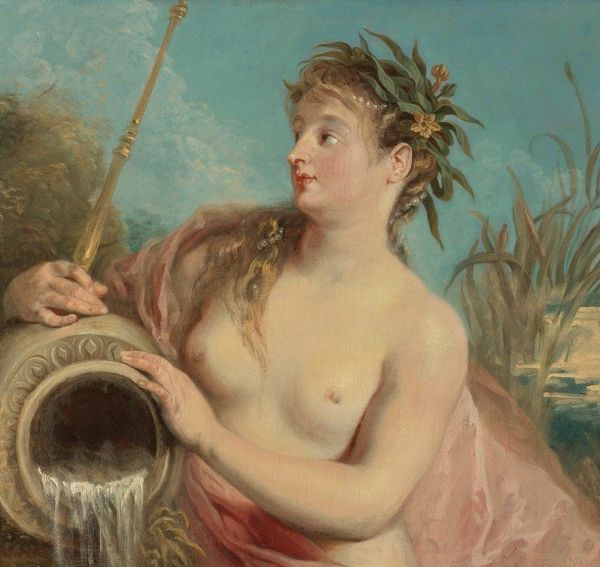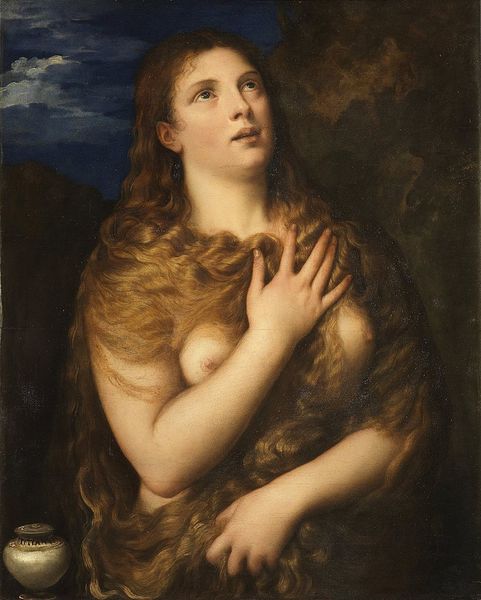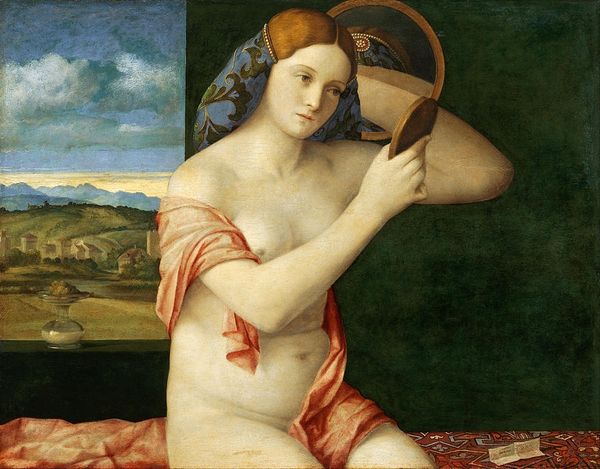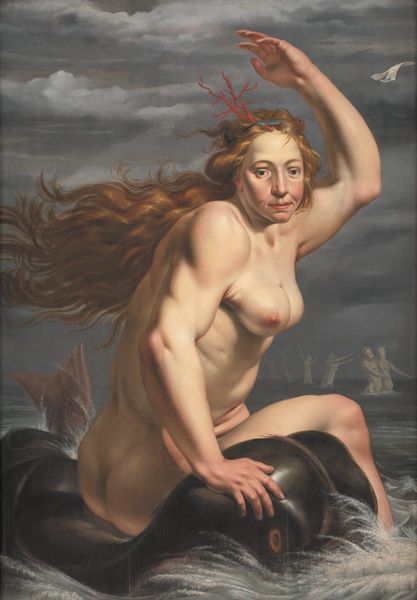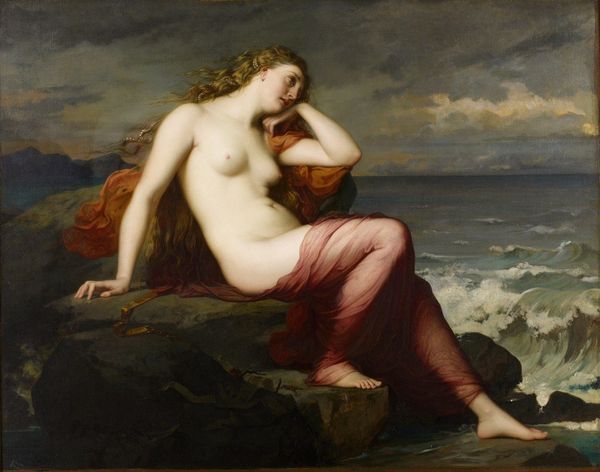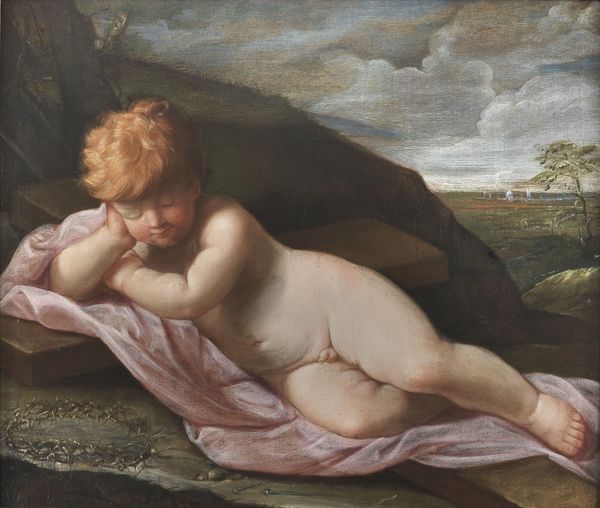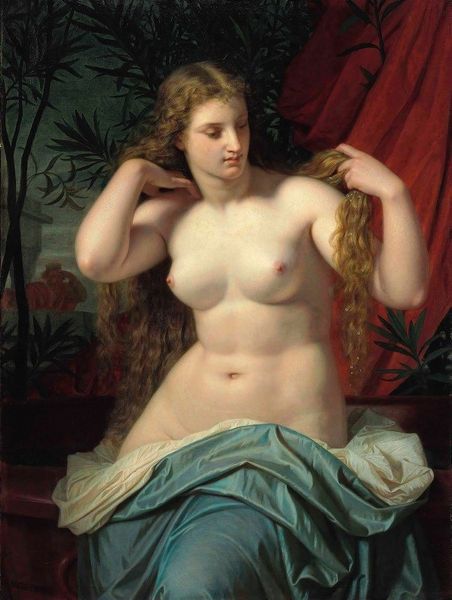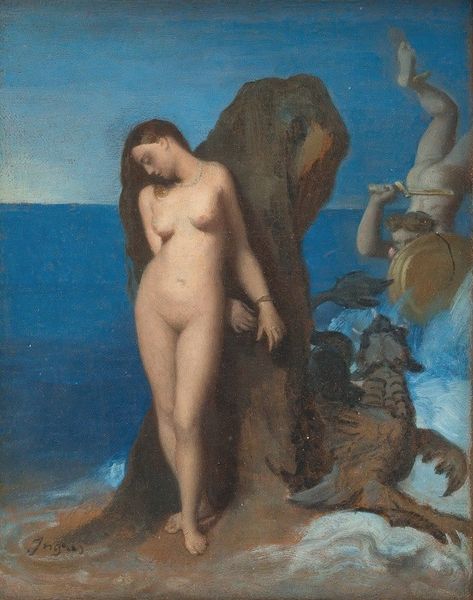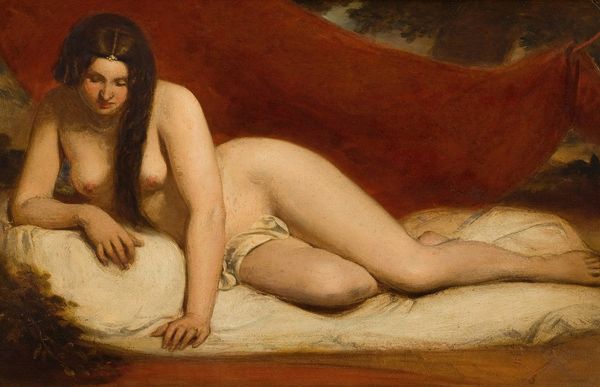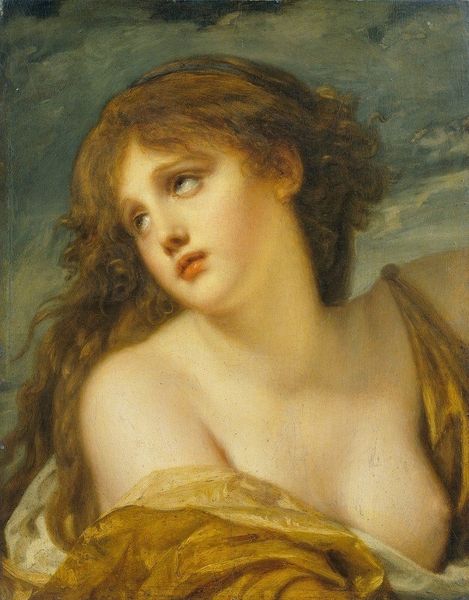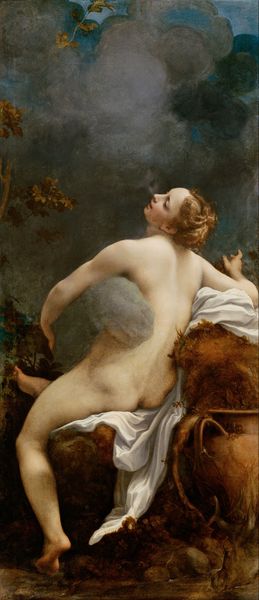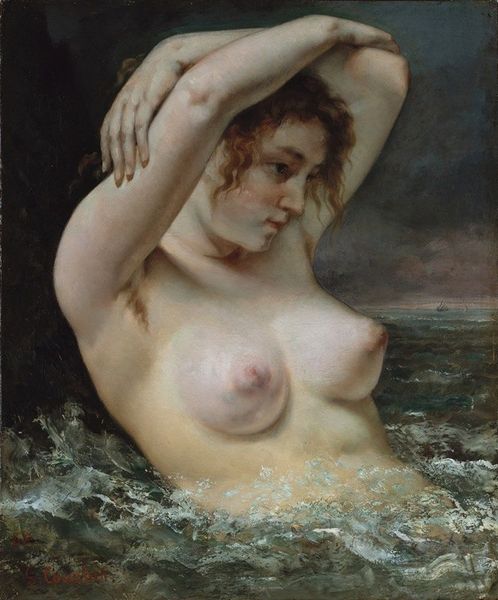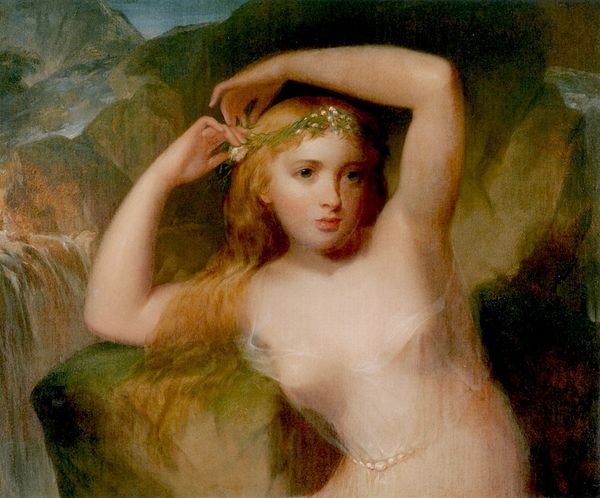
painting, oil-paint
#
portrait
#
venetian-painting
#
allegory
#
painting
#
oil-paint
#
figuration
#
oil painting
#
roman-mythology
#
mythology
#
human
#
history-painting
#
italian-renaissance
#
nude
#
portrait art
Dimensions: 76 x 57 cm
Copyright: Public domain
Curator: Let's talk about Titian's *Venus Anadyomene*, painted around 1520. It's currently housed in the Scottish National Gallery of Modern Art. Editor: My immediate reaction is one of serene intimacy. There's a gentleness in her pose and expression that draws you in, almost like witnessing a private moment. Curator: Exactly. Titian was deeply influenced by the humanist revival of classical mythology and by the artistic patronage system in Venice. Displaying a mythological theme, as this work exemplifies, showcased a painter’s knowledge, artistic training, and erudition to his wealthy patrons. Depicting Venus emerging from the sea was quite popular throughout the Renaissance, signifying rebirth and beauty. Editor: And it’s not just about physical beauty, is it? The shell at her feet acts as an emblem of fertility. The sea, from which she rises, represents not just her birth, but also a potential source of danger and the unknown, contrasting with her apparent vulnerability as she gently twists her hair. Curator: Absolutely, and Titian masterfully employs oil paint to render her flesh with such luminosity and delicate transitions in tone. Consider that throughout Venetian history, painting was associated with sensuality and materialism that reflected the city’s unique geographical situation as a maritime power connected to global commerce. It seems fitting that the texture and material composition serve that association. Editor: You know, seeing Venus presented in this way—less as an untouchable goddess and more as a beautiful woman—creates a profound shift in her symbolic value. She is no longer purely a divine figure, but a representation of human beauty idealized through mythology. What was the social implication, in your opinion? Curator: These Renaissance Venuses signified shifting social codes that elevated individualism and the humanist spirit—emphasizing that individuals, specifically aristocratic men who typically commissioned these paintings, possessed the agency to shape the future and harness resources that could offer a new type of secular fulfillment on Earth. Editor: It is curious to think that the same symbolism could carry these slightly contradictory emotional and political meanings, especially when one considers how women’s roles changed socially during the Italian Renaissance. It shows the lasting power of inherited images to mold, influence, and ultimately transcend cultures. Curator: I agree completely. There are still strong conversations about the legacy of power represented through painting that echo even to this day, particularly within our shared cultural spaces. Editor: Well, that's given me a new appreciation for Titian's Venus. Thanks for your perspective!
Comments
No comments
Be the first to comment and join the conversation on the ultimate creative platform.
